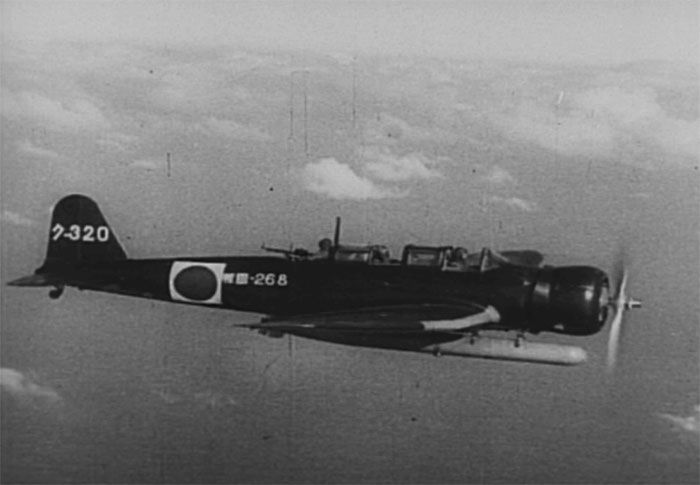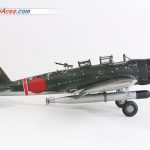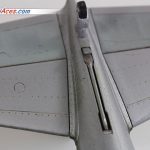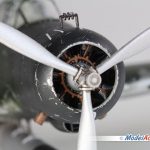Aircraft
Nakajima B5N “Kate”
Pilot & Markings
mperial Japanese Navy, Leyte Gulf 1944
Model Builder: Patrick Najmulski
Scale & Kit
1/48 Scale Hasegawa Model

History
With a bomb/torpedo load capacity of nearly 1,800 pounds and a range of 675 miles, the Nakajima B5N “Kate” was developed 1935-1936 and proved to be the most destructive Japanese weapon used in the surprise attack on the American fleet in Pearl Harbor.
Its usefulness even late in the war was demonstrated on December 5, 1944, when several B5N’s attacked an Allied convoy (Task Force 76.4.3) steaming from New Guinea carrying troops and equipment for the American invasion of the Philippines. A sailor aboard the Liberty ship SS Antoine Saugrain recalls that on the evening before the attack, a Japanese propaganda radio broadcast announced that the Saugrain was a prime target, and the ship was moved to a new location in the convoy formation. Another witness claimed that the attacking bombers seemed to concentrate on the Saugrain as their prime objective. Contemporary action reports referred to the especially important cargo on board.
The Saugrain was carrying an intelligence and communication army unit from the headquarters of General Douglas MacArthur, commander of the invasion force. Perhaps even more attractive targets were the personnel and armament below deck which comprised one of the war’s most advanced anti-aircraft battery systems, a searchlight battalion controlled by radar and computer-like technology.
After two direct torpedo hits, the Saugrain’s captain gave the order to abandon ship off Leyte Island. Although the ship’s rafts and lifeboats were insufficient for the more than 200 crew and soldiers to be rescued, all hands survived, thanks to two US Navy destroyers dispatched to the scene to pick up men in boats and swimming in the water. The Saugrain remained afloat as an American tug following the convoy attempted to tow the ship to port. Japanese bombers, however, returned to the Saugrain and finally sent her to the sea bottom.
The model was commissioned for an exhibition planned to accompany the 2017 publication of Liberties at War, An Engineer’s Memoir of the Merchant Marine 1942-1945 by Herman E. Melton, a junior officer aboard the Saugrain. Built from Hasegawa’s 1/48 scale kit (#JT76), the finish of the Nakajima B5N2 Type 97 Carrier Attack Bomber (Kate) Model 3 is based on historical photographs that reflect the ever-tightening submarine blockade of Japan’s supply lines after 1943. Paint shortages meant that under sides were often unpainted. Paint for identification and camouflage was sprayed directly on bare metal upper sides without primer, which limited adherence. The use of nets and palm fronds to conceal aircraft on the ground only added to paint chipping and peeling.
After all Japanese carriers in the area were sunk in the Battle of Leyte Gulf (October 1944), no carriers remained within striking distance of Task Force 76.4.3 as it approached the islands. The colors of this model portray a typical IJN plane orphaned when the carrier on which it was based had been sunk months earlier. The Saugrain’s attackers may have been former carrier aircraft transported to the Philippines to contest the Allies’ invasion by operating from one of the airfields on the islands at the time of the action.
Written by Will Melton






















Leave a Reply